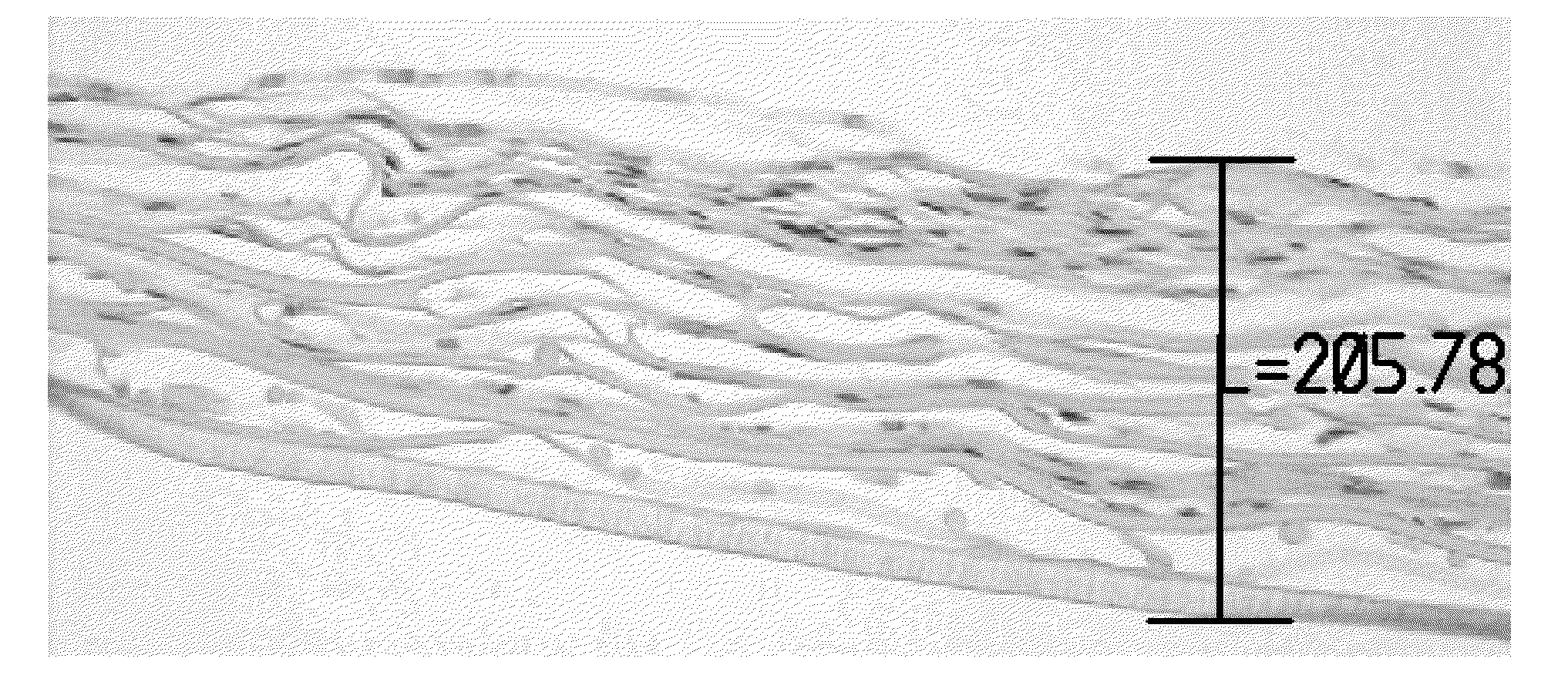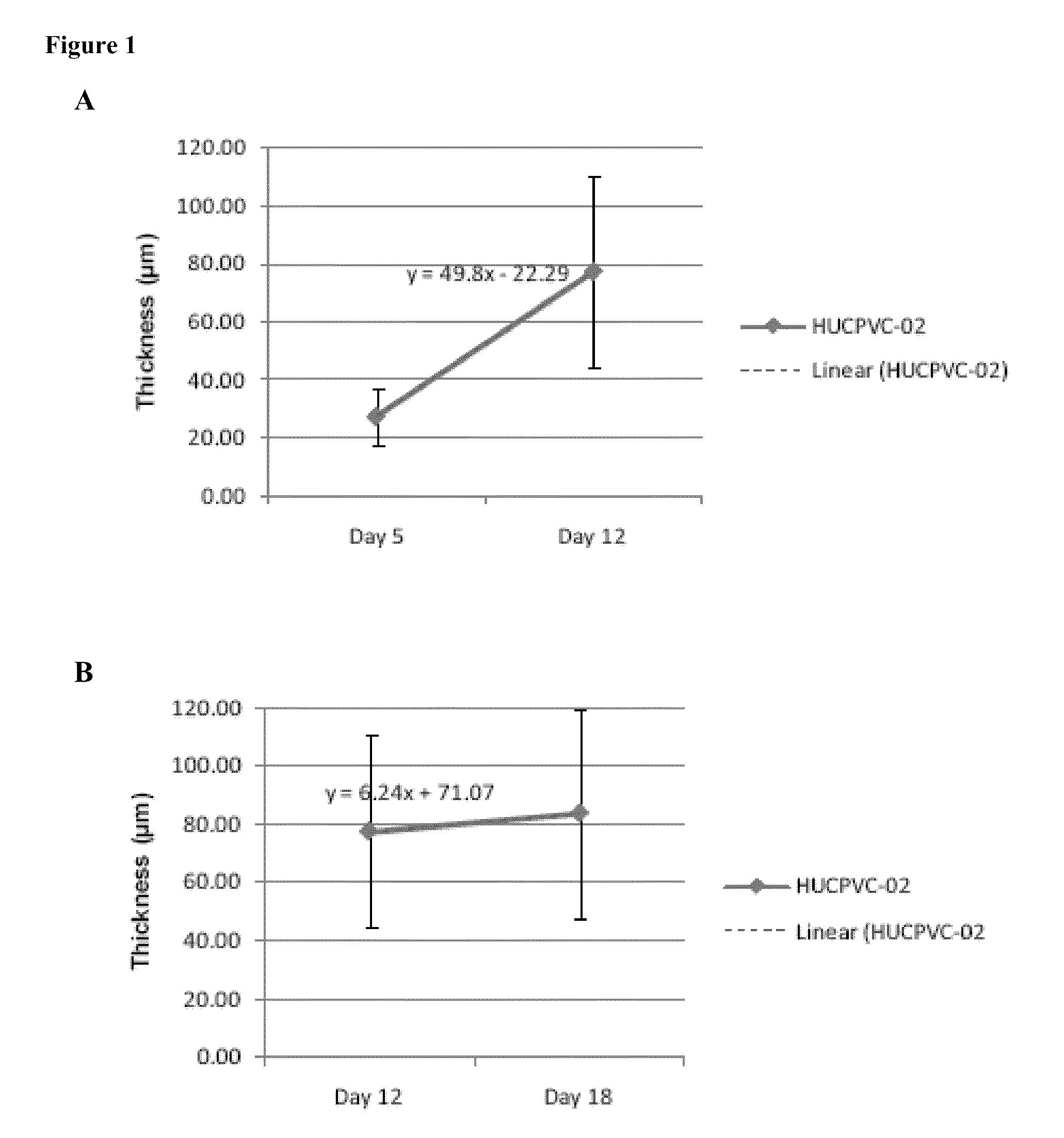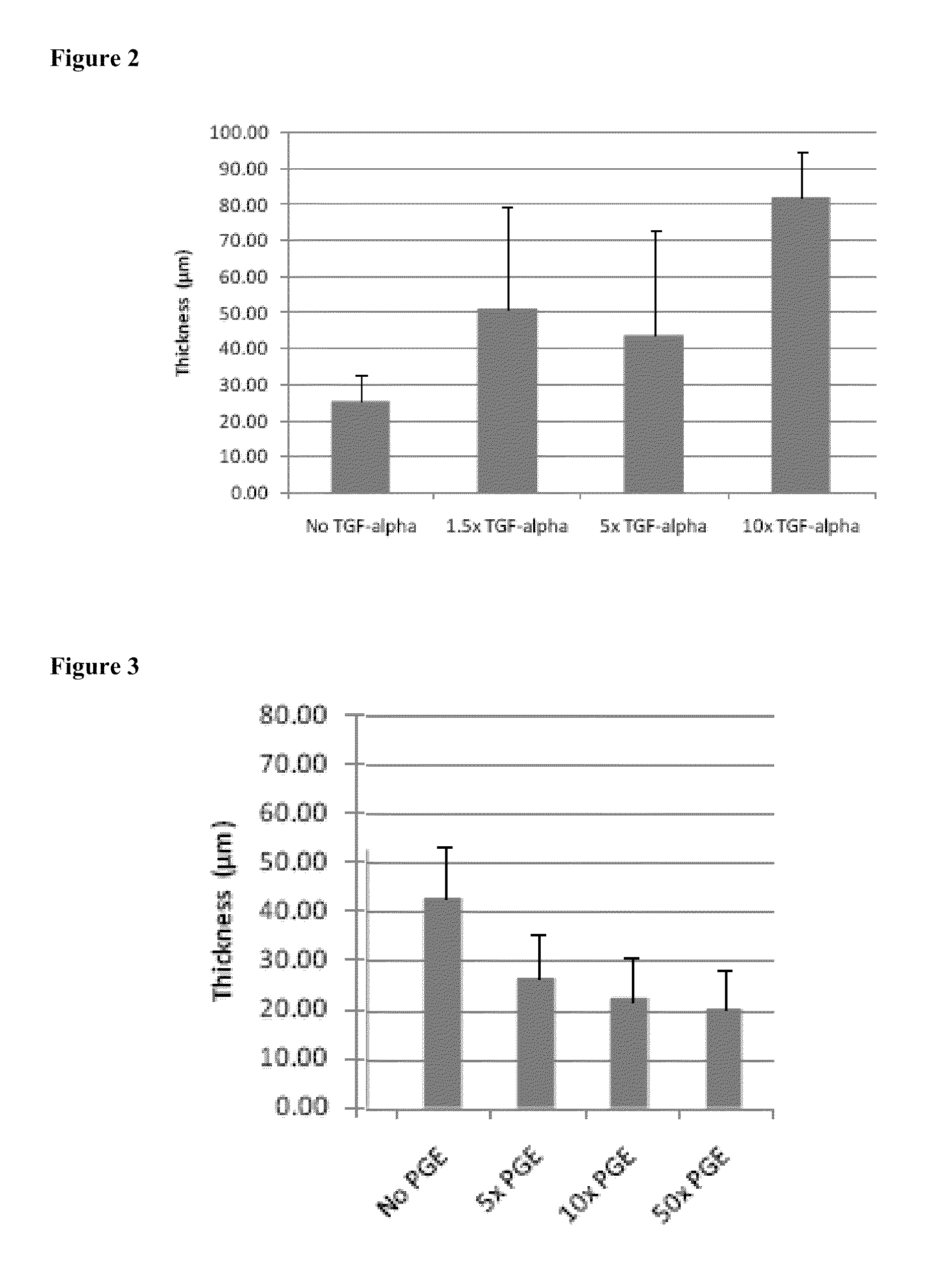Bioengineered Tissue Constructs and Methods for Producing and Using Thereof
a bioengineered tissue and construct technology, applied in the direction of skeletal/connective tissue cells, prosthesis, drug compositions, etc., can solve the problems of mesenchymal tissues being injured, and achieve the effect of reducing the thickness of bioengineered constructs
- Summary
- Abstract
- Description
- Claims
- Application Information
AI Technical Summary
Benefits of technology
Problems solved by technology
Method used
Image
Examples
example 1
Bioengineered Construct Produced by Mesenchymal Stem Cells (MSCs)
[0141]Generation of bioengineered constructs comprising mesenchymal stem cells grown under conditions to produce a layer of extracllular matrix which is synthesized and assembled by the mesenchymal stem cells is exemplified using human umbilical cord perivascular cells (HUCPVC). Specifically, skilled artisans have heretofore been unable to define preparatory conditions for allowing MSCs to synthesize and assemble extracellular matrix components to any appreciable thickness. Prior to seeding the HUCPVC, culture inserts were coated with about 5 ug / cm2 of human plasma-derived fibronectin. The bioengineered constructs were produced by initially seeding 3×106 HUCPVC per 24 mm insert. Subsequent to seeding the cells upon a culture insert with a porous membrane in a insert, the cells were maintained in culture for 18 days, with replacement with fresh culture media at days 5, 8, 12, and 15, in the following chemically defined ...
example 2
Biophysical Properties of Bioengineered Constructs Produced by Mesenchymal Stem Cells (MSCs)
[0144]In addition to generating appreciable amounts of synthesized and assembled extracellular matrix by mesenchymal stem cells to produce bioengineered construct having significant thicknesses, such bioengineered constructs have additional biophysical properties that distinguish them from extracellular matrices formed by other cell types.
[0145]MSC-derived bioengineered constructs seeded at superconfluency and cultured for 18 days according to the methods and culture media defined in Example 1. exhibited a significant difference in collagen arrangement and overall matrix morphology from similarly cultured HDF-derived bioengineered constructs (except using 20 ng / mL TGF-alpha). In particular, the extracellular matrix containes pore, is less dense, and contains aggregates of collagen bundles (FIGS. 5A-5B). Thus, MSC-derived bioengineered constructs have a porosity, which can be represented as th...
example 3
Multilineage Potential Properties of Bioengineered Constructs Produced by Mesenchymal Stem Cells (MSCs)
[0150]Assays were performed to determine the multilineage potential properties of cells isolated from bioengineered constructs produced by MSCs, as well as from MSCs within the native bioengineered construct environment. MSC-derived bioengineered constructs were seeded at superconfluency and cultured for 18 days according to the methods and culture media defined in Example 1. At day 18, the bioengineered constructs were either digested with collagenase to determine cell yields and cell digests for multilineage potential assays or directly cultured in induction media. Non-induced MSC control groups of cells and bioengineered constructs were maintained for each of the induced cell and bioengineered construct groups, wherein alpha MEM media supplemented with 10% fetal bovine serum (FBS) was used in the place of induction media. Media changes occurred every 2-3 days. In addition, HDF-d...
PUM
| Property | Measurement | Unit |
|---|---|---|
| thick | aaaaa | aaaaa |
| diameter | aaaaa | aaaaa |
| diameter | aaaaa | aaaaa |
Abstract
Description
Claims
Application Information
 Login to View More
Login to View More - R&D
- Intellectual Property
- Life Sciences
- Materials
- Tech Scout
- Unparalleled Data Quality
- Higher Quality Content
- 60% Fewer Hallucinations
Browse by: Latest US Patents, China's latest patents, Technical Efficacy Thesaurus, Application Domain, Technology Topic, Popular Technical Reports.
© 2025 PatSnap. All rights reserved.Legal|Privacy policy|Modern Slavery Act Transparency Statement|Sitemap|About US| Contact US: help@patsnap.com



